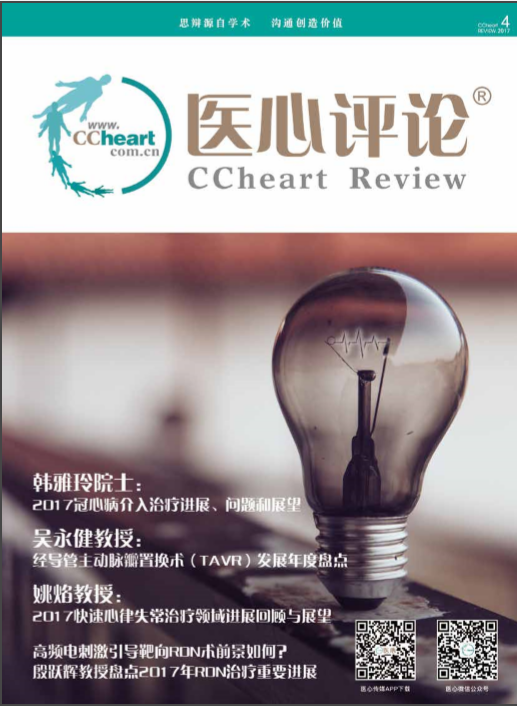ACC/AHA 成人慢性心力衰竭的诊断和治疗指南
发布于:2007-12-12 09:55
(2005年8月) ACC/AHA Guidelines for the Evaluation and Management of Chronic Heart Failure in the Adult(2005) Sharon Ann Hunt, MD, FACC, FAHA, Chair 北京安贞医院:韩智红 姚海木 张晓霞 吕 强 译 北京安贞医院:吴学思 审校 1目录 序言 1. 前言 2. 心力衰竭作为临床综合征的特点 2.1. 心力衰竭的定义 2.2. 心力衰竭是一种症状性疾病 2.3. 心力衰竭是一种不断发展的疾病 3. 有心力衰竭表现患者的临床评价 3.1. 患者的最初评价 3.1.1. 识别心力衰竭患者 3.1.2. 识别患者结构与功能的异常 3.1.3. 引起心力衰竭的原因评价 3.1.3.1. 病史与体格检查 3.1.3.2. 实验室检查 3.1.3.3. 冠心病可能性的评价 3.1.3.4. 心肌病可能性的评价 3.2. 患者的进一步评价 3.2.1. 功能评价 3.2.2. 容量状态评价 3.2.3. 实验室评价 3.2.4. 预后评估 4. 治疗 4.1. 有发展为心力衰竭高度危险的患者(阶段A) 4.1.1. 控制危险因素 4.1.1.1. 治疗高血压 4.1.1.2. 治疗糖尿病 4.1.1.3. 治疗代谢综合征 4.1.1.4. 治疗粥样硬化性疾病 4.1.1.5. 控制可能引起心肌损伤的情况 4.1.1.6. 其他措施 4.1.2. 结构异常的早期识别 4.2. 有心脏结构异常或重塑但尚无心力衰竭症状的患者(阶段B) 4.2.1. 心血管事件的预防 4.2.1.1. 急性心肌梗死的患者 4.2.1.2. 有心肌梗死病史但LVEF正常的患者 4.2.1.3. 高血压与左室肥厚的患者 4.2.1.4. 没有症状的慢性左室收缩功能不良患者 4.2.1.5. 无症状的严重瓣膜病患者 4.2.2. 心力衰竭的早期识别 4.3. 目前或曾经有心力衰竭症状的患者(阶段C) 4.3.1. LVEF减低的患者 4.3.1.1. 一般措施 4.3.1.2. 常规药物 4.3.1.2.1. 利尿剂 2 4.3.1.2.2. 肾素-血管紧张素-醛固酮系统抑制剂 4.3.1.2.2.1. 血管紧张素转化酶抑制剂 4.3.1.2.2.2. 血管紧张素受体阻滞剂 4.3.1.2.2.3. 醛固酮受体拮抗剂 4.3.1.2.3. β-肾上腺素能受体阻滞剂 4.3.1.2.4. 洋地黄 4.3.1.2.5. 抗室性心律失常药物与猝死的预防 4.3.1.3. 特定的患者可考虑应用的方法 4.3.1.3.1. 硝酸异山梨酯 4.3.1.3.2. 肼苯哒嗪 4.3.1.3.3. 肼苯哒嗪与硝酸异山梨酯 4.3.1.3.4. 心脏再同步化治疗 4.3.1.3.5. 运动训练 4.3.1.4. 正在进行研究的药物与治疗 4.3.1.4.1. 呼吸支持技术 4.3.1.4.2. 体外反搏 4.3.1.4.3. 加压素受体拮抗剂 4.3.1.4.4. 植入式血流动力学监测 4.3.1.4.5. 心脏支持装置 4.3.1.4.6. 正在研究的外科方法 4.3.1.4.7. 奈西立肽 4.3.1.5. 未证实有效与不支持应用的药物和治疗 4.3.1.5.1. 营养补充与激素治疗 4.3.1.5.2. 间断静脉正性肌力药物 4.3.2. LVEF正常的心力衰竭患者 4.3.2.1. 患者的识别 4.3.2.2. 诊断 4.3.2.3. 治疗原则 4.4. 终末期顽固性心力衰竭患者(阶段D) 4.4.1. 体液潴留的治疗 4.4.2. 神经体液抑制剂的使用 4.4.3. 静脉血管扩张剂和正性肌力药物 4.4.4. 机械和外科方法 5. 特殊人群的治疗 5.1. 女性和男性 5.2. 种族问题 5.3. 老年患者 6. 有伴随疾病的心力衰竭患者 6.1. 心血管疾病 6.1.1. 高血压、高脂血症与糖尿病 6.1.2. 冠状动脉疾病 6.1.3. 室上性心律失常 6.1.4. 血栓栓塞事件的预防 6.2. 非心血管疾病 3 6.2.1. 肾功能不全 6.2.2. 肺部疾病 6.2.3. 肿瘤 6.2.4. 甲状腺疾病 6.2.5. 丙型肝炎与HIV 6.2.6. 贫血 7. 终末期问题 8. 临床指南的实施 8.1.医疗人员个人的治疗干预 8.2.疾病治疗系统 8.3.工作实绩检测 8.4.全科医生与心脏科医生的作用 参考文献 ------------------------- 序 言 疾病的诊断、治疗或预防手段应用于临床的过程中,医务人员对这些诊断步骤与治疗的评价起重要的作用。严谨专业地分析正性或负性的相关资料有助于制定指南,从而提高治疗的有效性,改善患者的预后,并通过最有效的治疗而降低医疗费用。 美国心脏病学会(ACC)和美国心脏学会(AHA)从1980年开始联合制定心血管领域的指南,具体工作由ACC/AHA临床指南专家委员会实施,其作用是建立并修改心血管领域重要的疾病与措施的实施指南。相关专题的专家来自这两个学会,负责综合相关资料并撰写或修改相应的指南。该过程还包括了其他一些医务工作者和相关组织的成员。撰写组重点负责完成正式的文献综述,权衡支持与反对某项治疗或措施的证据和综合已有资料估测预后。患者的特殊情况、伴随疾病和患者对某些观念的喜好可能对检查和治疗的选择、随访的频率及效费比产生影响。如果可能,还应考虑研究中的花费情况,但是,有效性与临床预后是制定指南最首要的依据。ACC/AHA临床指南专家委员会尽量避免偏袒有争议的观点或编写人员的个人观点,特别是要求所有编写人员公开评价不同的观点。这些观点经过高级专家委员会评审,并在每次会议中口头告知所有编写人员,如有变化,编写组会根据情况进行制定。 临床指南制定的目的是指导帮助临床医生对于特定疾病与临床状态的诊断、治疗或预防。这些指南反映的是专家根据目前有证据的资料达成的一致建议,目的是尽量满足大多数患者在大多数情况下的需要,改善患者的治疗情况及使患者获得最大益处,对于某个特定患者的最终判断应根据患者的具体情况由医生与患者决定。 这些指南有ACC和AHA管理部门批准发行,并通过美国胸科学会、国际心肺移植学会与心脏节律学会的同意。ACC/AHA指南工作组在指南发行后每年回顾一次,直至重新制定、修改或撤出。本指南的摘要将同时发表在2005年9月20日的美国心脏病学会杂志(JACC)与循环杂志(Circulation)上。其全文公布在ACC(www.acc.org)与AHA(www.my.american-heart.org)网站上,可通过上述两个组织获得全文和摘要。 ACC/AHA临床指南专家委员会主席Elliott M. Antman,MD,FACC,FAHA 1. 前言 心力衰竭已成为美国主要的公共卫生问题。美国的心力衰竭患者约有500万,每年新增55万[1],并可造成每年1200-1500万次临床就诊,总住院天数达650万[2]。1990年至1999年,以心力衰竭作为首要诊断的年住院次数由81万增加到100万,作为首要诊断或次要诊断的由240万增加到360万[3],2001年,死于心力衰竭的患者约有5.3万。尽管心力衰竭的治疗有很大的进展,但死于心力衰竭的患者数目还在逐步上升,其部分原因是由于急性心肌梗死治疗的进步,存活者增多[1]。 心衰竭主要是一种老年人疾病[4],因此人口的老龄化也是心力衰竭发生率增加的原因。年龄超过65岁的老年人中,心力衰竭的发生率约为1%[1],因心力衰竭住院的患者约80%年龄大于65岁[5]。心力衰竭已成为最常见的医疗卫生诊断相关人群(dignosis-related group),用于心力衰竭诊断与治疗的医疗支出高于其他疾病[6]。2005年其直接与间接花费约为279亿美元[1],每年应用于心力衰竭药物治疗的花费约为29亿美元[1]。 ACC与AHA于1995年首次公布了心力衰竭的诊断与治疗指南,并于2001年进行了修订[7],从那时起,围绕此种常见、花费高、致残并潜在致死的疾病,开展了大量有关药物与非药物治疗的研究,可选择的治疗方法增加,这种增加使得临床决策更难作出,起始治疗的时机、次序,以及各种治疗合用的合理性尚未确定。对于存在LVEF正常的心力衰竭患者这一认识也在不断增加,对于这一部分重要人群的有证据依据的治疗还很少这一事实,也广为重视。由于这些原因,两个组织认为应该重新评价并修订指南,对于心力衰竭治疗最佳选择的认识尚不完善,有待于不断补充与修订。 写作组包括15名成员,代表了ACC与AHA,以及美国胸科医师学会、美国心力衰竭学会、国际心肺移植学会、美国家庭医生学会和美国内科医师学会。包括学术与个人实践中的问题。该指南的审阅人包括ACC指定的3名、AHA指定的3名、美国家庭医生学会指定的1名、美国胸科医生学会指定的2名、美国内科医生学会指定的1名、美国心力衰竭学会指定的4名、国际心肺移植学会指定的1名,还有的9名来自ACC/AHA心力衰竭执行委员会、ACC/AHA急性心肌梗死指南制定修改委员会、ACC/AHA/ESC房颤指南制定委员会、ACC/AHA 冠脉旁路手术指南委员会、ACC心力衰竭标准委员会、AHA治疗质量与预后研究委员会、AHA心力衰竭与移植委员会。在ACC与AHA的网站上,有2个版本的指南全文,其中1个版本将建议中的变化作为重点,即只将2005年版与2001年版中建议的不同点罗列出来,而省去了那些支持改变的证据与图表。 在2001年版中,撰写组采用了一种新的心力衰竭的分级方法,该方法同时强调心力衰竭的发生与进展,因此它将心力衰竭分为4个阶段。前2个阶段(阶段A与B)的患者并无心衰,但是医务工作者应该重视的发生心力衰竭的高危人群,阶段A与B最好的定义是具有发生心力衰竭高度危险的患者,例如,冠心病、高血压、糖尿病而未有左室功能受损、心肌肥厚或心腔几何形态变形的患者属于阶段A;而有左室肥厚和/或左室功能受损的无症状患者属于阶段B;阶段C为过去或目前有心力衰竭症状并有心脏结构改变的患者(大多数的心衰患者属于此类);阶段D为顽固性心力衰竭需要特殊加强的治疗者,如应用机械循环支持、液体移出操作、持续静脉正性肌力药物、心脏移植或新发明的与正在研究的外科方法、临终关怀等。 该分级方法包括了将会发展为心力衰竭的有危险因素和心脏结构变化的阶段,在左室功能不全或症状出现之前便采取治疗措施可降低心力衰竭的病残率和死亡率。该分级方法是纽约心脏病协会(NYHA)心功能分级方法的补充而不是替代,NYHA分级是对该分级中的阶段C与D的患者症状严重性的分级。多年来已经认识到NYHA分级具有医生的主观判断,而且短时间内可以有很大变化,不同级别的病情治疗差异不大。因此,委员会认为需要一种稳定的阶段分级系统来客观地评价患者饿的病情进展情况,针对不同阶段进行相应的治疗。根据新的分阶段方法,患者的病情可能不进展或只能向更高一级进展,疾病可通过治疗减慢或停止进展,但一般不会发生自发的逆转。例如,一个有临床症状的心力衰竭患者(阶段C)随着治疗或疾病的进展可以有不同的症状分级(NYHA),但他永远也不会回到阶段B(从未发生心力衰竭),阶段C所推荐的治疗他全部适用,尽管他的NYHA分级是Ⅰ级。这种新的分级方案扩展了我们对心力衰竭的思路,与其他一些疾病的分级方法有些类似(例如肿瘤的分级方法)。 ACC/AHA对于建议分类与证据等级的描述如下。 建议分类: Ⅰ类:有证据和/或共识证实采取的诊断措施/治疗实用并有效。 Ⅱ类:采取的措施/治疗的实用性和有效性的证据有矛盾和/或观点有分歧。 Ⅱa类:证据/观点倾向于实用/有效。 Ⅱb类:证据/观点不倾向于实用/有效。 Ⅲ类:有证据和/或共识证实采取的措施/治疗无实用性/无效并且在某些病例可能有害。 证据等级: A级:资料来自多项随机临床试验或荟萃分析; B级:资料来自单个随机临床试验或大的非随机研究; C级:专家共识的意见和/或小规模的研究。 本指南的建议尽可能采用循证医学作为证据,相关的医学术语应用英语的表达方式经过一系列计算机检索(包括Medline和EMBASE)并人工检索了一部分文章,所列出的参考文献具有代表性但并非全部。对于某类药物的建议也是指具体有循证医学证据证实有效的药物,除非公认这类药物有广泛的类效应。 委员会把本指南的重点锁定为心力衰竭的预防及成人LVEF正常或减低的慢性心力衰竭患者的诊断与治疗。本指南没有涉及急性心力衰竭,后者需要制定专门的指南,并且在ACC/AHA急性ST段抬高心肌梗死指南[8]及ACC/AHA不稳定心绞痛和非ST段抬高心肌梗死指南2003[9]中有部分论述。本指南还排除了儿童的心力衰竭,因为儿童心力衰竭的基础疾病与成人不同,并且尚没有包括儿童的治疗心力衰竭的对照研究。本指南也不包括主要由瓣膜病(见ACC/AHA心脏瓣膜病治疗指南[7])或先天性心脏病引起的心力衰竭,不包括对心脏特异性疾病(例如血色素沉着症、结节病或淀粉样变性)的治疗建议。 本指南的目的是帮助医务工作者在心力衰竭的预防、诊断和治疗方面提供可选用的方法,为的是在多数情况下满足多数患者的需求,但对于特定患者的最终决定还需医务人员根据情况加以确定。本指南并未从社会学观点上分析费效学,也不能帮助建立合理利用医疗资源的政策,事实上本指南并未考虑资源不足的问题,没有给政策制定者提供资源分配的信息。本指南描述的治疗策略是对每个患者可采纳的治疗方法的罗列,每个患者都是独特的,不仅是因为其心力衰竭的病因与过程不同,还包括其个人和社会对这种疾病的观念。指南只能罗列出有证据依据的决定或建议,这也是本指南的目的。



 京公网安备 11010102002968号
京公网安备 11010102002968号